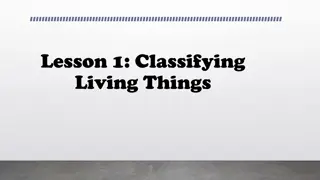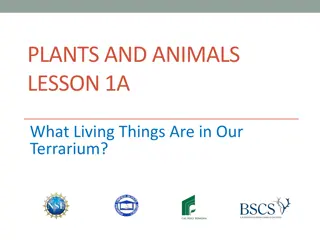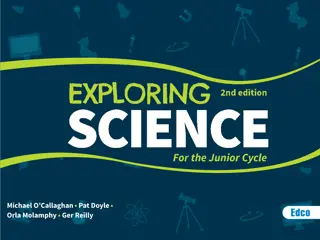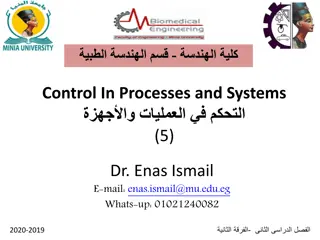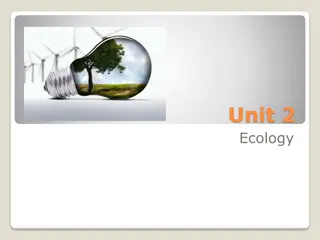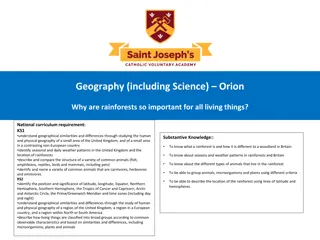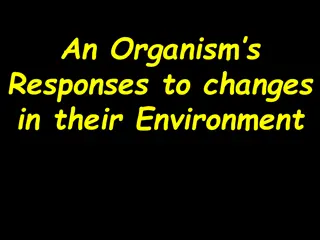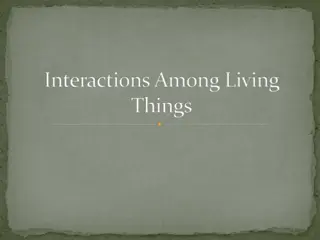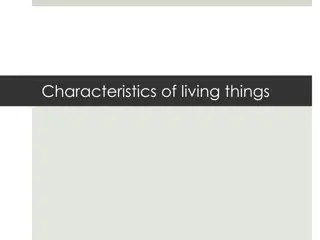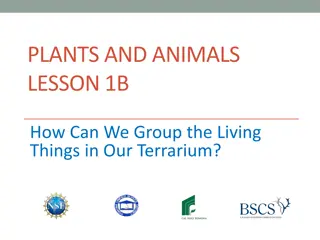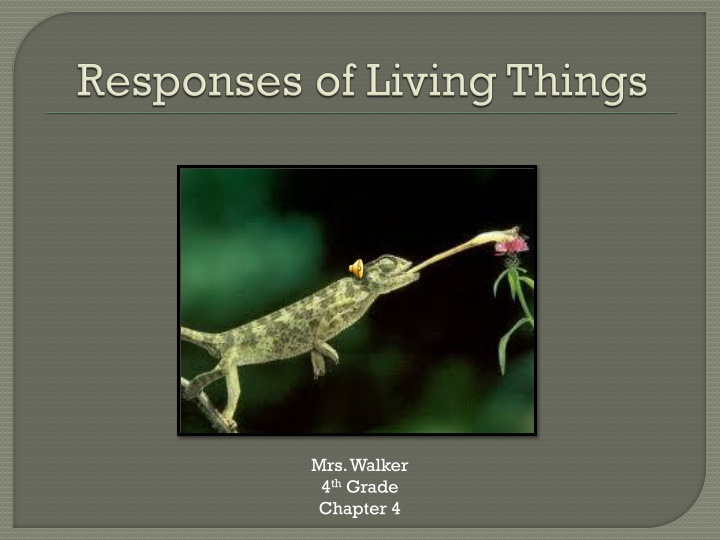
Exploring Reactions to Surroundings in Mrs. Walker's 4th Grade Chapter 4
Dive into the fascinating world of reactions to surroundings with a bloodhound sniffing the ground, a tree reaching for sunlight, and a child covering their ears after a loud noise. Discover how living things respond to stimuli and engage in life processes, using the five senses to detect changes in the environment.
Download Presentation

Please find below an Image/Link to download the presentation.
The content on the website is provided AS IS for your information and personal use only. It may not be sold, licensed, or shared on other websites without obtaining consent from the author. If you encounter any issues during the download, it is possible that the publisher has removed the file from their server.
You are allowed to download the files provided on this website for personal or commercial use, subject to the condition that they are used lawfully. All files are the property of their respective owners.
The content on the website is provided AS IS for your information and personal use only. It may not be sold, licensed, or shared on other websites without obtaining consent from the author.
E N D
Presentation Transcript
Mrs. Walker 4th Grade Chapter 4
A bloodhound sniffs the ground, following a scent. A tree grows tall, reaching toward the sunlight. A child covers his ears after hearing a loud noise. THINK: What do the bloodhound, the tree, and the child have in common? You will have one minute to discuss this with your partner. Then we will share our opinions.
The bloodhound, the tree, and the child are all reacting to things in their surroundings. Look at the chart. Tom is reacting to his surroundings. Cause: Sarah screamed very loudly. Effect: Tom covered his ears after hearing a loud noise.
All living things react to their surroundings, or environment. In Chapter 1 we learned about life processes, and when an organism react to their environment, they are carrying out life processes. The environment is everything that surrounds a living thing.
HOW DO YOU DETECT CHANGES IN YOUR ENVIRONMENT? THE FIVE SENSES: You use your sense organs such as your eyes, nose, ears, and skin. You use your eyes to see, your nose to smell, your ears to hear, and your skin to touch. Special parts of your tongue help you taste the food you eat.
Imagine that you feel a cold wind outside. What would be your reaction? Your reaction would be putting on a sweater or a jacket. A stimulus is anything that causes a living thing to react. A reaction to a stimulus is called a response. Shivering and putting on a sweater are responses.
Many animals use the five senses to detect stimuli and respond. Rabbits use their good sense of hearing to detect enemies and respond by scurrying to their dens. Plants do not have five senses, but they do react to stimuli. Plants grow toward light.
Have you ever heard the phrase blind as a bat ? Bats can see, but most do not see well. Some bats do not see well. Some bats do not use their eyes to find juicy moths to eat. Instead, these bats send out sound waves that bounce off objects in the environment and travel back to the bats. This form of detection is called echolocation. Dolphins also use echolocation.
Watch Tim and Moby explain everything you need to know about bats! http://www.brainpop.com/science/diver sityoflife/bats/
Another example of animals using their sense organs is the crayfish. Crayfish have hairs that can detect tiny movements in the water around them. This helps them find food. Crickets have hearing organs on their legs! Bees can taste with their antennas. They also have organs for taste on their jaws and on their front legs.
Some animals sense things in unusual ways. You may have seen a snake flicking its forked tongue back and forth. The snake is using its tongue and an organ in its mouth to smell. The tongue takes in particles of scent from the air. The tongue then transfers the particles to the organ in the snake s mouth. The organ analyzes the particles.
Anything in an organism s environment that causes it to react is an external stimulus. Bright sunlight is an external stimulus for most plants. The plants grow toward the light. An internal stimulus is anything within an organism that causes it to react. For example, hunger pains are an example of an internal stimulus. For most people, the reaction to this stimulus is to eat.
Plants and animals react to both external and internal stimuli. Some dogs respond to the sight and sound of a can of dog food being opened by salivating. The sight of the dog food can and the sound of it being opened are external stimuli.
Classify the following statements as a Cause or Effect on your graphic organizer. A cold wind blows on you The plant wilts You shiver and put on a sweater A plant needs water The dog salivates A moth detects a bat s sound waves A dog sees a can of its food being opened The moth flies away, flies in loops, or drops to the ground and hides. ****Check your answers on the next slide.
Cause Effect A cold wind blows on you A plant needs water A moth detects a bat s sound waves You shiver and put on a sweater The plant wilts The moth flies away, flies in loops, or drops to the ground and hides. The dog salivates A dog sees a can of its food being opened.
Use pages A90-A94 to help answer your review questions.




